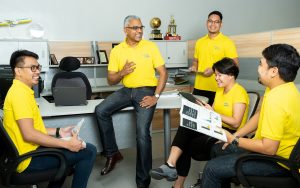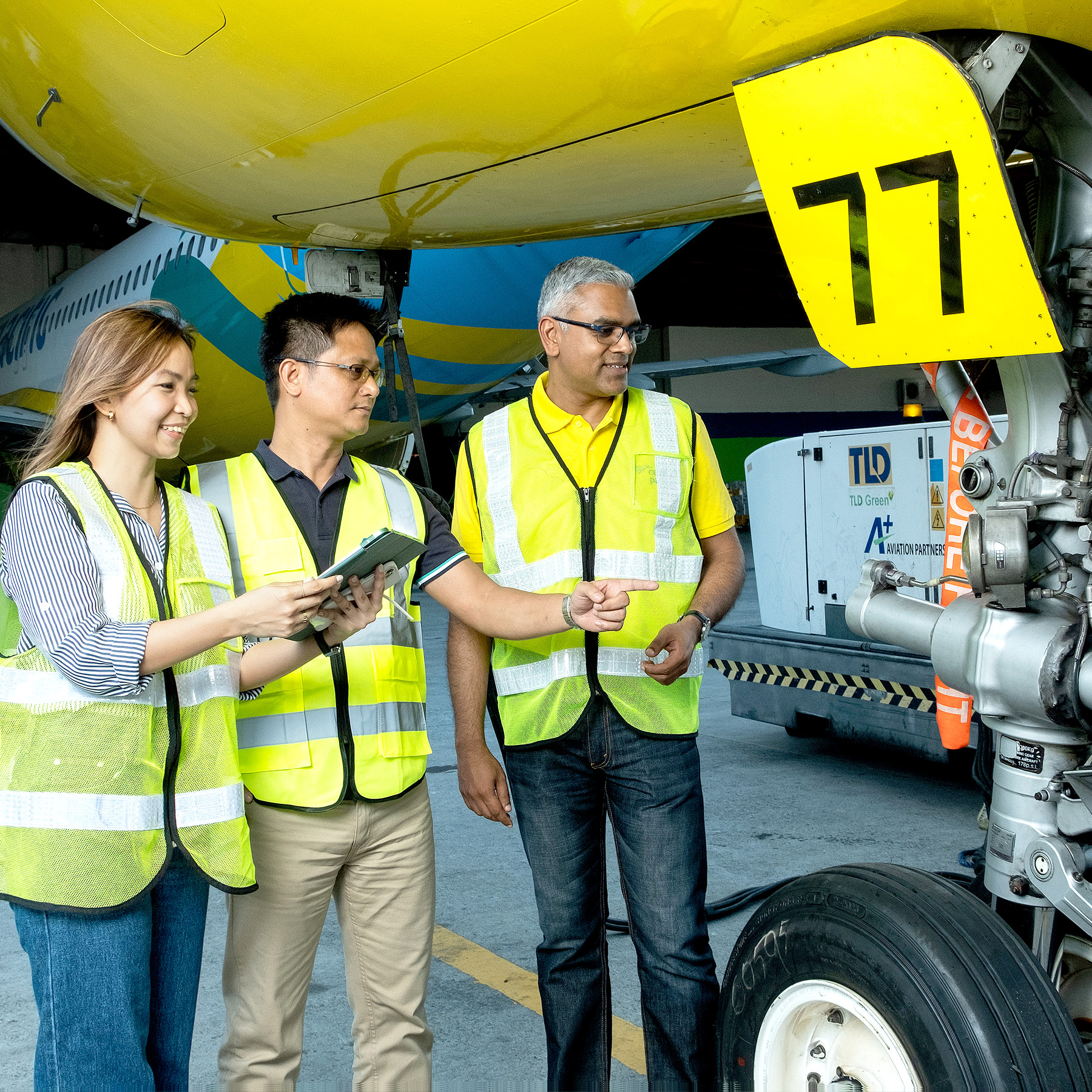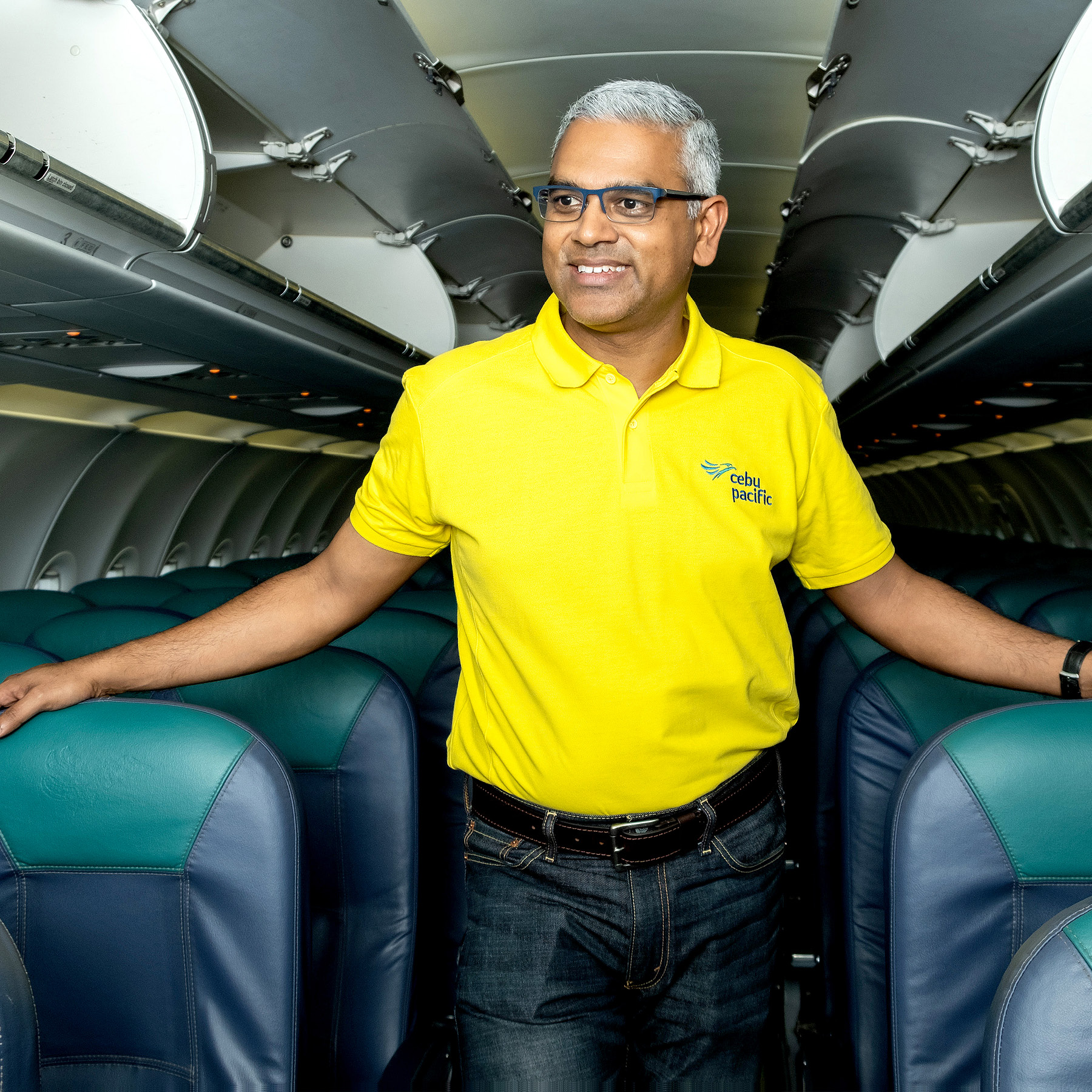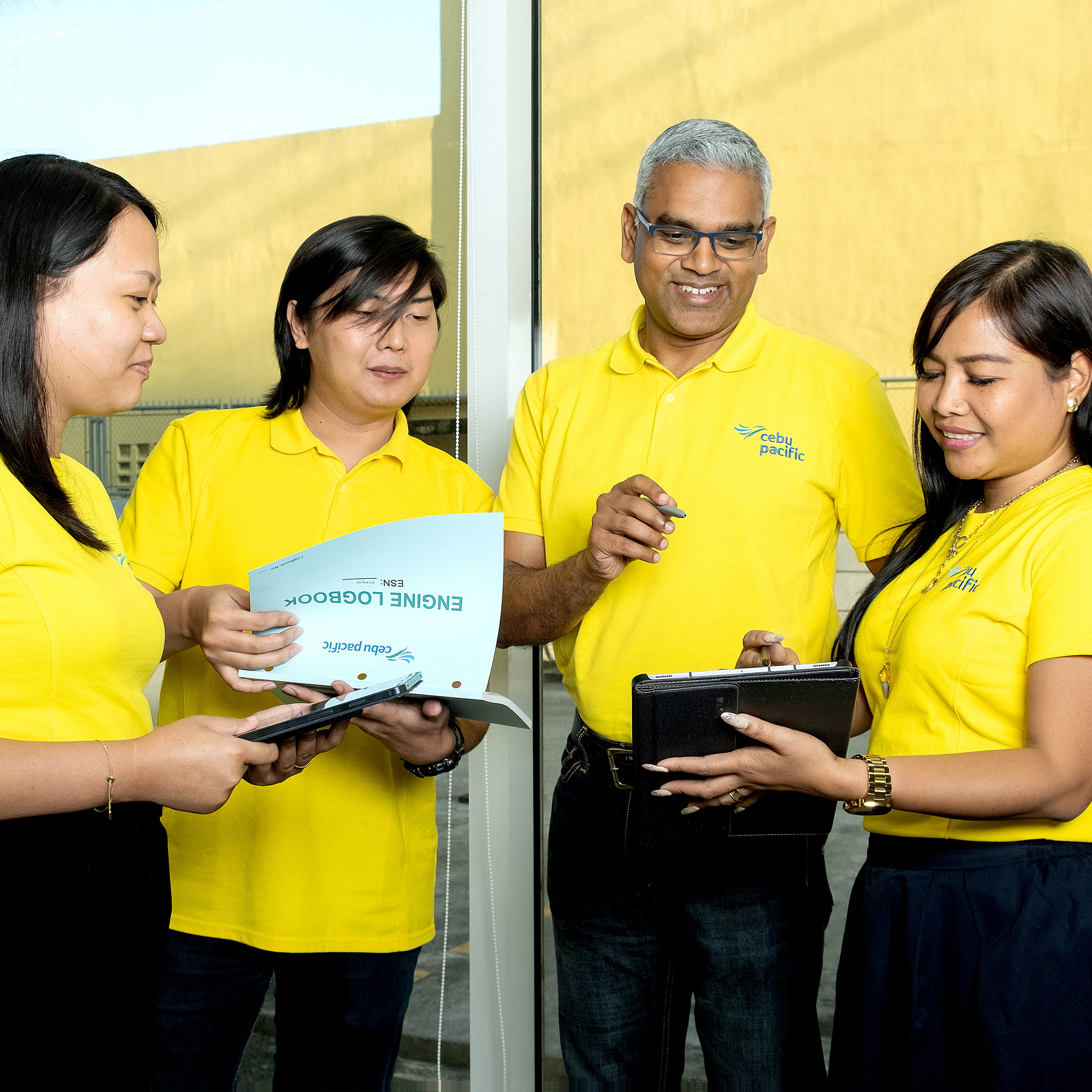Language
You can read the magazine in one of the following languages
Geolocation
You can read the global content or the content from your region


Shevantha Weerasekera has been a busy man since joining Cebu Pacific, the Philippines’ low-cost airline and Asian aviation pioneer, in early 2022.
Weerasekera – known as ‘Shev’ by his colleagues – was immediately tasked with bringing Cebu Pacific’s fleet out of storage after being parked due to the COVID-19 pandemic. And it’s become even busier as Cebu Pacific ramps up service, introduces new destinations and accommodates pent-up passenger demand.
“There was a fair amount of flying in domestic and international markets and the region was opening up, so our aircraft were at maximum utilization as early as April 2022,” the Vice President for Engineering and Fleet Management tells The CEO Magazine. “It’s been one hell of a ride since then.”
The pandemic grounded global aviation, but Cebu Pacific – consistently one of the world’s most profitable airlines prior to the shutdown – has returned to its position of prominence, providing trusted and friendly service in its home market of the Philippines and has resumed flights to the Middle East, all of Asia and China.

“I wanted to be part of an airline that is growing and is very focused, like Cebu Pacific. So when the opportunity came, I took it.”
“The long-term plans are growth,” Weerasekera says. “It’s no big secret that the airline wants to grow in terms of passenger capacity, in terms of the markets that it serves and in terms of the product that it offers.”
The prospects of growth attracted Weerasekera to Cebu Pacific. A native of Sri Lanka, he has a track record of building and leading world-class, multi-discipline engineering teams to support airline operations as well as maintenance, repair and overhaul facilities.
He served as Head of Engineering & Head of Design Organization for Etihad Airways Engineering, and later accepted an invitation to join SriLankan Airlines as the Head of Engineering to restructure and grow the airline’s engineering and maintenance arm. When Cebu Pacific recruited him, Weerasekera was keen to work in a fast-growing region.
“I wanted to move east because the aviation opportunities are in the east,” he says. “It’s untapped and there’s a lot of potential. I wanted to be part of an airline that is growing and is very focused, like Cebu Pacific. So when the opportunity came, I took it.”

Weerasekera is ensuring the airline continues its expansion in East Asia by managing its fleet – one of the youngest in the industry – while also helping to develop the capabilities of its line maintenance business, Aviation Partnership Philippines (Aplus).
Aplus started as a joint venture between Cebu Pacific and Singapore Airlines Engineering Company in 2005 to provide line and light maintenance services in the Philippines. But Cebu Pacific made the strategic decision in 2020 to in-source maintenance and purchase its partner’s shares in the venture.
“Due to this, we were able to ramp up at the speed we wanted to and get the cabins ready, get the aircraft ready, do the engine changes and move much faster than the competition,” Weerasekera says.
Along with in-sourcing its maintenance work, Cebu Pacific has implemented a company-wide focus on sustainability. For Weerasekera, it starts with the fleet of next generation Airbus NEO aircraft with an average age of 5.5 years – and getting younger.
“We placed an early order for the Airbus 320neos, 321neos and the 330neos and we’ve been transitioning our fleet from the old aircraft to the NEOs,” Weerasekera says, adding the airline expects to be flying a full next generation fleet by 2028.

“We’ve got one of the youngest fleets in the region and that’s a very comfortable place to be.”
“We’ve got one of the youngest fleets in the region and that’s a very comfortable place to be in because you’re doing the right thing for the environment and sustainability,” he explains.
Other initiatives include trials with sustainable aviation fuel, reducing the weight of aircraft by swapping heavy seats and carpets for lighter alternatives, and going paperless in the cockpit.
“Any other unnecessary bits and bobs usually carried on the aircraft have been stripped down,” he says. “We also run a drag reduction program, where it’s a specific maintenance check done on the aircraft to make sure that the aircraft remain aerodynamic and burn less fuel.”
Cebu Pacific has also started querying vendors on sustainability. “Come 2024 or even 2025, it might be a qualification criterion for you to do business with us,” Weerasekera says.
Cebu Pacific also prioritizes supplier relationships – to the point that it continued receiving new aircraft throughout the pandemic when competitors canceled contracts with manufacturers.
“We never broke our contractual obligations or promises,” Weerasekera says proudly.
“We managed the vendor relationships throughout the pandemic, which meant coming out of the pandemic, we were the first to receive services or components.”

The airline pursues close relationships with key suppliers, who Weerasekera speaks with every two weeks and visits monthly. Relationships are so close that some have even joined Weerasekera for a meal at his home. “It’s not only a business relationship,” he says.
The relationship allows for sharing tips and best practices, along with providing feedback. “There’s a fair amount of knowledge shared for mutual benefit,” he says.
“We also openly discuss business challenges or sometimes ideas, innovations or ideas for change saying, ‘Guys, could we get together and do something?’”
Cebu Pacific took to the skies in 1996 from its home base in Manila as Asia’s first low-cost carrier. It debuted long-haul flights in 2013 to Dubai and served its 200 millionth customer in 2022.
Innovation has also marked Cebu Pacific – Weerasekera points to its process of digitization, which supports operational efficiency and allowed the airline’s offices to operate remotely during the pandemic.

“We actually have other airlines coming to study how we’ve evolved and how we do things.”
And with its operational prowess, embrace of technology and recent return to profitability, Cebu Pacific is charting a path for others to follow.
“We have been very tech-savvy. We are a very young management team, and we are a very young workforce, which means we move faster, we react faster,” Weerasekera says.
“We actually have other airlines coming to study how we’ve evolved and how we do things.”